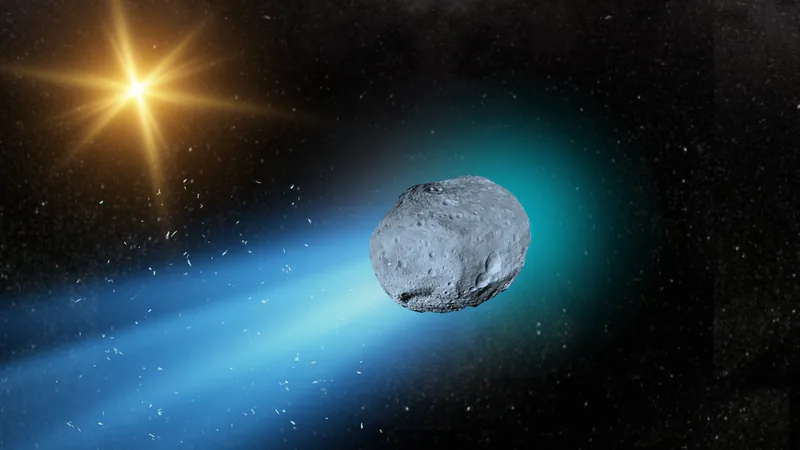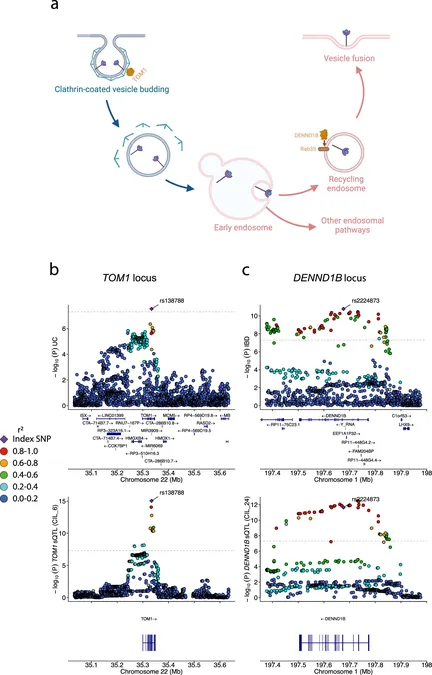
Ancient Comet 3I/ATLAS: A Chilling Discovery of Water Ice Older than Earth!
2025-07-23
Author: Yu
An Interstellar Wonder Revealed
In an exciting revelation, scientists have uncovered that the newly identified "interstellar invader" comet 3I/ATLAS is brimming with water ice that could date back an astounding 7 billion years—making it potentially older than the very Earth itself!
A Cosmic Treasure Trove of Organic Material
This ancient comet isn’t just about water. It also harbors a fascinating mix of organic molecules, silicates, and carbon-based minerals, closely resembling asteroids found at the fringes of our solar system's main asteroid belt, situated between Mars and Jupiter.
Advanced Observations from Earth
Using the SpeX instrument on NASA's Infrared Telescope Facility perched atop Hawaii's Mauna Kea, along with Gemini's Multi-Object Spectrograph in Chile, researchers made these groundbreaking observations.
A Rare Interstellar Visitor
Discovered on July 1 by the ATLAS survey telescope, 3I/ATLAS marks only the third interstellar object ever detected as it traverses our solar neighborhood. The previous two were the cigar-shaped 1I/'Oumuamua in 2017 and the unique hybrid 2I/Borisov in 2019.
A Hidden Galaxy of Interstellar Voyagers?
Researchers speculate that up to one million interstellar visitors may be lurking within our solar system, with many possibly hidden in the Oort cloud — a vast shell of comets at the solar system's icy boundary. The study of 3I/ATLAS and similar interstellar wanderers could illuminate the conditions of distant planetary systems.
Inside the Comet: Spectroscopy Insights
Bin Yang, the lead researcher and scientist at Universidad Diego Portales, expressed excitement about the comet’s activity, confirming its classification as a comet due to its visible coma — a nebulous halo of gas and dust. "The thrilling discovery was the presence of water ice features in this coma," Yang stated.
Hints of an Ancient Cosmic History
Despite lacking direct gas emissions, the study showed that 3I/ATLAS resembles D-type asteroids that contain organic-rich silicates and water ice. With reflectance properties akin to these asteroids, the comet's spectrum could match materials from the Tagish Lake meteorite, suggesting a blend of organics, silicates, carbonate minerals, and significant water ice.
A Glimpse into Galactic Evolution
Moreover, research indicates that 3I/ATLAS originates from a region of the Milky Way where stars formed over 2.5 billion years before our sun, giving it an estimated age of 7 billion years—potentially marking the oldest comet humanity has ever studied. Yang emphasized, "If the water ice detection is confirmed, it could represent some of the oldest and most pristine water ever observed, formed in another planetary system and preserved during its journey through the cosmos."
The Ongoing Quest for Knowledge
Yang and the team are eagerly anticipating additional data from large telescopes like the Very Large Telescope and the Keck Observatory. They aim to corroborate the ice detection while searching for atmospheric gas emissions as 3I/ATLAS approaches the sun.
An Ever-Enigmatic Entity
As research on 3I/ATLAS unfolds, it promises to keep scientists engaged for years, offering unprecedented insights into the cosmos and the origins of water in our universe.





 Brasil (PT)
Brasil (PT)
 Canada (EN)
Canada (EN)
 Chile (ES)
Chile (ES)
 Česko (CS)
Česko (CS)
 대한민국 (KO)
대한민국 (KO)
 España (ES)
España (ES)
 France (FR)
France (FR)
 Hong Kong (EN)
Hong Kong (EN)
 Italia (IT)
Italia (IT)
 日本 (JA)
日本 (JA)
 Magyarország (HU)
Magyarország (HU)
 Norge (NO)
Norge (NO)
 Polska (PL)
Polska (PL)
 Schweiz (DE)
Schweiz (DE)
 Singapore (EN)
Singapore (EN)
 Sverige (SV)
Sverige (SV)
 Suomi (FI)
Suomi (FI)
 Türkiye (TR)
Türkiye (TR)
 الإمارات العربية المتحدة (AR)
الإمارات العربية المتحدة (AR)